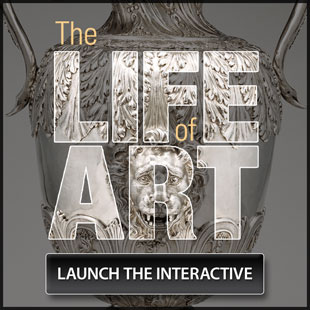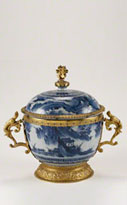I’d already been planning to write something about the Getty Museum sometime soon — before the J. Paul Getty Trust announced its choice for the director of the museum today — Timothy Potts, formerly with the Fitzwilliam Museum at Cambridge and before that director of the Kimbell Art Museum in Fort Worth (here’s the link to the press release). So now I’ll put away what I was going to write and switch to the Getty.
 But not about Potts. I know him a little, and by reputation as well. And I know him to be a very ambitous man. How he will fit in at the Getty remains to be seen. The Trust is a messy, hydra-headed entity, and whether it works or not has always depended on the personalities involved. It remains to be seen whether the five people now in place, James Cuno at the trust, and the heads of four divisions will work together nicely.
But not about Potts. I know him a little, and by reputation as well. And I know him to be a very ambitous man. How he will fit in at the Getty remains to be seen. The Trust is a messy, hydra-headed entity, and whether it works or not has always depended on the personalities involved. It remains to be seen whether the five people now in place, James Cuno at the trust, and the heads of four divisions will work together nicely.
Let me move to my original post, which is again about getting people to appreciate the art in museums.
On Feb. 7, a new, long-term exhibition opened at the J. Paul Getty Museum called The Life of Art: Context, Collecting, and Display.  It displays four objects from the permanent collection and encourages visitors to sit down and spend time with them, offering the opportunity to examine them closely to understand how they were made and functioned, why they were collected, and how they have been displayed. The Getty has also installed touch screen interactive displays that highlight and explain visual clues about the life of each object.
The four objects are a silver fountain (France, 1661-1663), a lidded porcelain bowl (China or Japan and England late-1600s) (pictured at left), a gilt-wood side chair (France, about 17351740), and a gilt-bronze wall light (France, 1756) . They’re shown in “an inviting, comfortable setting” and the works are displayed “at table height so that each can be seen easily at close range and in the round.”
 The Getty has written labels to prompt visitors to examine the artworks carefully, looking for “makers marks or inscriptions, details of construction or assembly, and visual evidence of alteration or repair.” The interactives do the same. If you go to the exhibition website, you can, as the picture above suggests, “launch the interactive.”
The Getty has written labels to prompt visitors to examine the artworks carefully, looking for “makers marks or inscriptions, details of construction or assembly, and visual evidence of alteration or repair.” The interactives do the same. If you go to the exhibition website, you can, as the picture above suggests, “launch the interactive.”
The press release that triggered my interest is dated Dec. 20, 2011, and quoted Potts’s recently departed predecessor:
“Many of the objects in the Getty Museums permanent collection have fascinating stories,” said David Bomford, acting director of the J. Paul Getty Museum. “By focusing on close engagement with a few selected works, The Life of Art encourages critical seeing and reveals the full lives of these objects and why they continue to be collected and cherished today.”
Later, it says:
Each of the works of art in the exhibition has a mate, or a similar piece, on view in the adjacent permanent collection galleries, allowing visitors the opportunity to compare the different viewing experiences. Labels will be installed in the spots where each piece is normally displayed—marking their absence, illustrating how each object is normally displayed and directing visitors to the exhibition.
As I always say when I haven’t a show in person, I reserve judgment until, and if, I do. The online interactives seem a little too simple, and perhaps the Getty should have made advanced versions, too.
Nonetheless, this seems to be another excellent example of trying to get people to observe more and learn more at museums, without shoving education down their throats, which they seem to resist.
Good for the Getty. I invite feedback from anyone who has been to the show.
